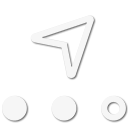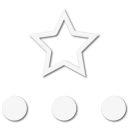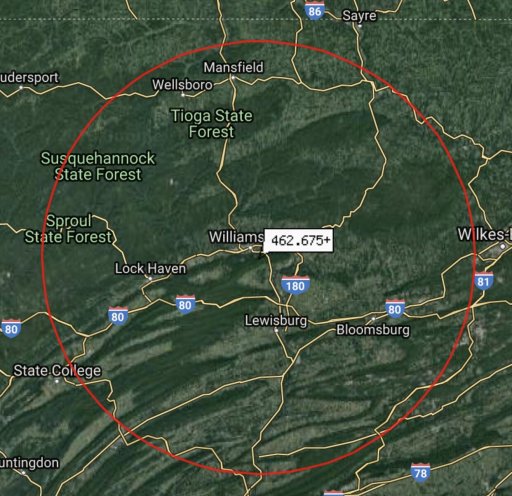
Off-Road Ranger I
The Overland Bound community has settled on some common "calling" frequencies for the most common radio types. These are meant to be a starting point for making contact with a Overland Bound members. If your local region already has other generally accepted practices, you may want stick with them instead.
Canada GMRS / FRS
Channel: 15 (Channels and bandwidth requirements match that of U.S. GMRS/FRS)
License: Industry Canada certifies specific radios for use on GMRS and FRS which share the same channels. Only an Industry Canada certified device can be used on these frequencies. No license is required for either GMRS or FRS.
CTCSS / Privacy Codes: Some FRS and GMRS radios offer the ability to use what are called Privacy Codes or CTCSS tones as a way to limit the incoming transmissions to only the people in your group. Look at your radios manual for details and be aware that in order to use this option, all radios in your group must also support this feature.
Range: GMRS is limited to 2 watts and FRS is limited to 0.5 watt, expected range would about 2 miles (3.2km) or less.
U.S. GMRS / FRS
Channel: 15
License: The FCC certifies specific radios for use on GMRS and FRS which share the same channels. Only an FCC certified device can be used on these frequencies, and additionally, GMRS use requires a household license to be purchased from the FCC that is good for 10 years.
CTCSS / Privacy Codes: Some FRS and GMRS radios offer the ability to use what are called Privacy Codes or CTCSS tones as a way to limit the incoming transmissions to only the people in your group. Look at your radios manual for details and be aware that in order to use this option, all radios in your group must also support this feature.
Range: Similar to the VHF amateur radios, a typical range for GMRS on the trail is likely somewhere around 2-6 miles. FRS radios (which do not require the additional FCC license) are much lower power, and therefore the range is significantly reduced, making them less desirable.
U.S. Citizen's Band (CB)
Channel: 16
License: There is no license requirement for CB use in the United States of America.
Squelch: Almost all CB radios will have a squelch control, this additional knob is used to adjust the noise cut-off on the incoming signal. If you find that other people in your group can hear you, but you can't hear them, adjust the squelch down as you may be filtering too much of the incoming signal.
Range: CB power output is limited to 4 watts, so in a typical trail situation, the range is realistically about 3-4 miles.
Australia & N.Z. UHF CB
Channel: 21
License: There is no license requirement for UHF CB use Australia or New Zealand
Range: UHF CB power output is limited to 5 watts, so in a typical trail situation, the range is realistically about 10km. In ideal conditions, you can probably double that distance, and for raised repeaters, you can probably reach up to 100km.
U.K. 27Mhz CB
Channel: 10
License: There is no license requirement for 27Mhz CB use in the U.K.
Squelch: Almost all CB radios will have a squelch control, this additional knob is used to adjust the noise cut-off on the incoming signal. If you find that other people in your group can hear you, but you can't hear them, adjust the squelch down as you may be filtering too much of the incoming signal.
Range: CB power output is limited to 4 watts, so in a typical trail situation, the range is realistically about 4-7km.
E.U. UHF CB / PMR
Being updated
Southern Africa
Requires a license yes. No exams, flat yearly fee. Can be obtained here (or at 4x4 clubs):
https://www.4x4community.co.za/radiolicense/ R225 a year ($12)
Comms In a Group Run
Before any organized run, select a trail leader and hold a quick drivers meeting where, among other things, you can announce the details of how communication will be managed on the run. Select a "tail gunner" to monitor the rear of the pack, and if the group is large, a "mid gunner" as well. Announce the chosen radio type and the frequency/channel that will be used. Many times not every vehicle has a radio, or there may be some vehicles that do not have the radio type chosen as the primary means of communication. Consider relaying some important turn callouts and such to a secondary radio. For example, if ham radios will be used primarily, you might still announce important turns or warnings on a CB channel as well. Always let drivers know to keep an eye on the vehicle behind them in the rear view mirror and to stop if they ever lose sight. This will keep the group together even in the case that radio contact is lost or unavailable. When leading a moderate to large sized group, it's best to keep the radio chatter mostly focused around trail direction. Socializing on the radio in a larger group can end up making it difficult to call out important turns or obstacles. To make up for this, it's a good idea to have some regularly time stops for bio-breaks and socializing in person.
Canada GMRS / FRS
Channel: 15 (Channels and bandwidth requirements match that of U.S. GMRS/FRS)
License: Industry Canada certifies specific radios for use on GMRS and FRS which share the same channels. Only an Industry Canada certified device can be used on these frequencies. No license is required for either GMRS or FRS.
CTCSS / Privacy Codes: Some FRS and GMRS radios offer the ability to use what are called Privacy Codes or CTCSS tones as a way to limit the incoming transmissions to only the people in your group. Look at your radios manual for details and be aware that in order to use this option, all radios in your group must also support this feature.
Range: GMRS is limited to 2 watts and FRS is limited to 0.5 watt, expected range would about 2 miles (3.2km) or less.
U.S. GMRS / FRS
Channel: 15
License: The FCC certifies specific radios for use on GMRS and FRS which share the same channels. Only an FCC certified device can be used on these frequencies, and additionally, GMRS use requires a household license to be purchased from the FCC that is good for 10 years.
CTCSS / Privacy Codes: Some FRS and GMRS radios offer the ability to use what are called Privacy Codes or CTCSS tones as a way to limit the incoming transmissions to only the people in your group. Look at your radios manual for details and be aware that in order to use this option, all radios in your group must also support this feature.
Range: Similar to the VHF amateur radios, a typical range for GMRS on the trail is likely somewhere around 2-6 miles. FRS radios (which do not require the additional FCC license) are much lower power, and therefore the range is significantly reduced, making them less desirable.
U.S. Citizen's Band (CB)
Channel: 16
License: There is no license requirement for CB use in the United States of America.
Squelch: Almost all CB radios will have a squelch control, this additional knob is used to adjust the noise cut-off on the incoming signal. If you find that other people in your group can hear you, but you can't hear them, adjust the squelch down as you may be filtering too much of the incoming signal.
Range: CB power output is limited to 4 watts, so in a typical trail situation, the range is realistically about 3-4 miles.
Australia & N.Z. UHF CB
Channel: 21
License: There is no license requirement for UHF CB use Australia or New Zealand
Range: UHF CB power output is limited to 5 watts, so in a typical trail situation, the range is realistically about 10km. In ideal conditions, you can probably double that distance, and for raised repeaters, you can probably reach up to 100km.
U.K. 27Mhz CB
Channel: 10
License: There is no license requirement for 27Mhz CB use in the U.K.
Squelch: Almost all CB radios will have a squelch control, this additional knob is used to adjust the noise cut-off on the incoming signal. If you find that other people in your group can hear you, but you can't hear them, adjust the squelch down as you may be filtering too much of the incoming signal.
Range: CB power output is limited to 4 watts, so in a typical trail situation, the range is realistically about 4-7km.
E.U. UHF CB / PMR
Being updated
Southern Africa
License:Click to expand...
Channel Frequency Tone Channel 01 161.1500 131.8 Channel 02 160.4500 131.8 Channel 03 161.1500 118.8 Channel 04 160.4500 118.8 Channel 05 152.6625 131.8 Channel 06 152.6625 118.8 Channel 07 152.6625 None Channel 08 161.1500 None Channel 09 160.4500 None
Requires a license yes. No exams, flat yearly fee. Can be obtained here (or at 4x4 clubs):
https://www.4x4community.co.za/radiolicense/ R225 a year ($12)
Comms In a Group Run
Before any organized run, select a trail leader and hold a quick drivers meeting where, among other things, you can announce the details of how communication will be managed on the run. Select a "tail gunner" to monitor the rear of the pack, and if the group is large, a "mid gunner" as well. Announce the chosen radio type and the frequency/channel that will be used. Many times not every vehicle has a radio, or there may be some vehicles that do not have the radio type chosen as the primary means of communication. Consider relaying some important turn callouts and such to a secondary radio. For example, if ham radios will be used primarily, you might still announce important turns or warnings on a CB channel as well. Always let drivers know to keep an eye on the vehicle behind them in the rear view mirror and to stop if they ever lose sight. This will keep the group together even in the case that radio contact is lost or unavailable. When leading a moderate to large sized group, it's best to keep the radio chatter mostly focused around trail direction. Socializing on the radio in a larger group can end up making it difficult to call out important turns or obstacles. To make up for this, it's a good idea to have some regularly time stops for bio-breaks and socializing in person.
Last edited by a moderator:












